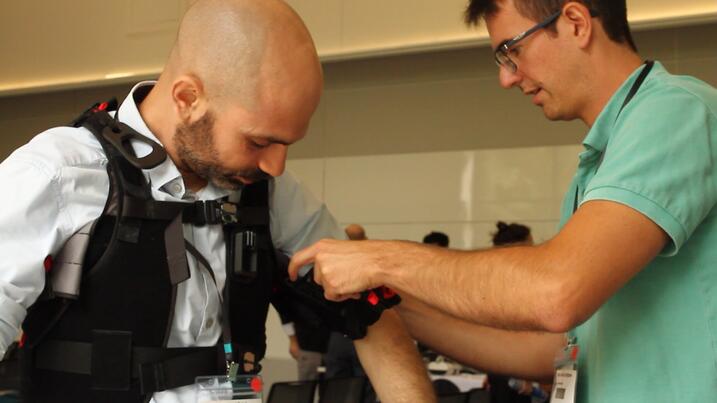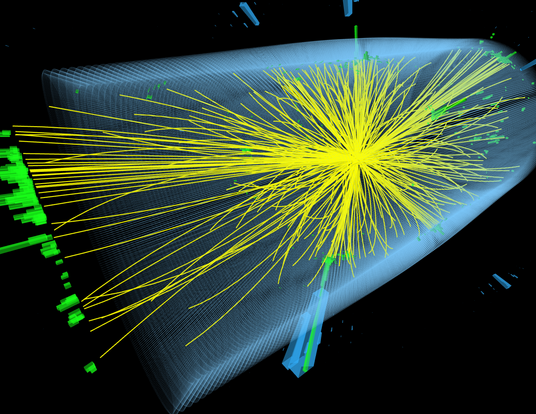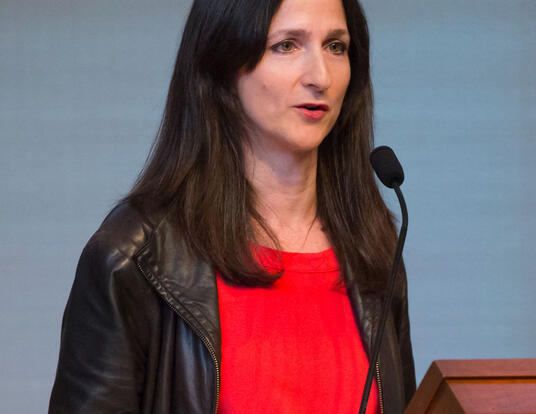What Moves Us?
Alkis Hadjiosif, PhD ’15
Alkis Hadjiosif is an instructor at Massachusetts General Hospital and Harvard Medical School, where he studies motor control in stroke patients. Below, he discusses his work on finding how strokes affect movement, how he came to the field of neuroscience, and the rewards of working with patients in clinical settings.
Laying the Ground for the Future
I came to graduate school with a background in engineering, but I didn’t know much about neuroscience, which is what I ultimately ended up working on. My research has blended engineering with neuroscience, trying to understand how the brain learns to control movement. We call this motor learning and motor control.
As a PhD student, I tried to break down the different components of motor learning to understand how the body learns a skill. There are different processes and different interactions between these learning processes, and different areas of the brain are involved. After I finished my doctoral work, I wanted to apply similar principles to patient research: measure motor control and motor learning in patients, break it down into different components, and see which ones are the most affected.
Eyes Open
My advisor at Harvard Griffin GSAS, Professor Maurice Smith, has both MD and PhD training. That was a huge benefit to me. In our interactions, he always had a double perspective that guided me in my research. It helped me think about what the clinical applications could be down the road and what the future of my work might look like. As a first-year graduate student, I never imagined I would end up in neuroscience. I initially thought I would do something more theoretical, or work on dynamical systems for robotics. In my first conversation with Maurice, I was intrigued by how he applied engineering principles to understand the neuroscience of motor learning—modeling learning processes like dynamical systems. This inspired me to pursue research on those topics. So, we have similar math— in these examples, the math of dynamical systems—but two distinct ways to use them. An engineer builds a system, and thus understands what each part of the system does; here, we use engineering principles to help understand a pre-existing, complicated system, the brain.
Even though we’ve accumulated much information about the brain, there is quite a lot we don’t know. I have seen how models of the brain can change. It’s taught me to keep an open mind and acknowledge the limitations of certain approaches. I never expect my models to tell me everything, but even a limited model can give useful insight.

Movement after stroke
After I got my PhD, I focused on research with stroke patients. When a stroke happens, most of the time it’s due to blood flow being blocked from part of the brain, depriving the brain cells from the oxygen they need. At other times, it’s due to an artery rupture into the brain—blood flows into brain tissue and damages it. Depending on where the damage is in the brain, you may see different symptoms in stroke patients. Some may have issues with movement; others lose the ability to talk; others might also develop cognitive issues. Or combinations of these things. My work focuses specifically on those who have problems with motor control.
Motor control issues in stroke patients can take different forms. You may see less dexterity, you may see abnormal patterns where muscles become harder to coordinate. Some patients may lose movement entirely. I want to trace back these different sorts of problems, to find which neural networks are responsible for which problem. Once we understand the mechanisms behind each issue, we could possibly design non-invasive brain stimulation to bring movement back to normal. Down the road, that is our goal: to design targeted therapies, therapies that are personalized to the specific sort of combination of issues each patient faces.
Theory and Practice
In my current role, I have a lot of patient interaction, which is really eye-opening. The research I do aims to help stroke patients, to try to help them improve their motor function and hopefully allow them to do more in their day-to-day lives. It is one thing to theoretically model what different parts of the brain do, how they coordinate movement, and how a stroke might affect this coordination and so on; it’s another thing to interact with a person who has been through a stroke. I have a lot of admiration for the people who generously give their time as study participants. For example, in the past, I worked on a study where we compared the effects of stroke on patients in long-term recovery versus those recently released from the hospital. It was remarkable that they participated in an observational study—meaning, a study that offered no treatment, thus no direct benefit—only weeks after a traumatic event in their lives like a stroke. They gave us their time and energy so that stroke victims in the future might have a better chance to recover. I hope the insights we glean from these studies live up to that purpose and eventually improve rehabilitation.
Get the Latest Updates
Join Our Newsletter
Subscribe to Colloquy Podcast
Simplecast





